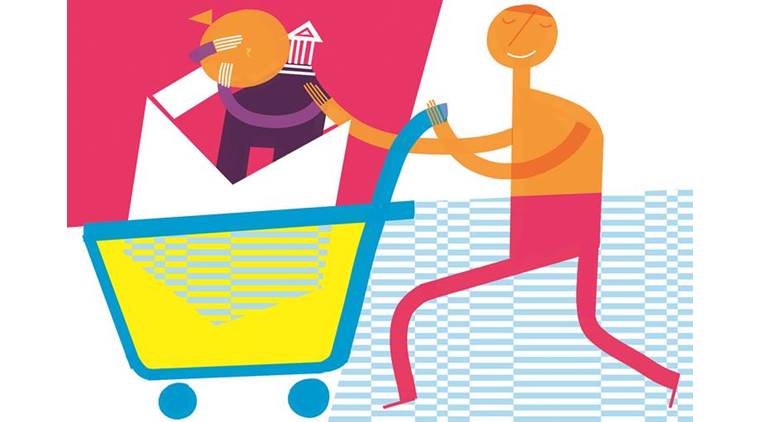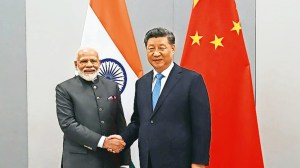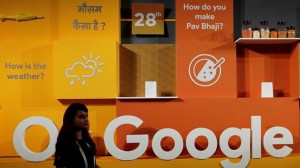Snapdeal buy may give Flipkart SoftBank high
Flipkart will have to work out certain issues but the support it would get from SoftBank would provide it with legroom to compete with Amazon; for a consumer, this could mean continued discounts, say experts
 Flipkart and Amazon, as opposed to Snapdeal, still have certain control over their inventory and logistics through sellers such as WS Retail and Cloudtail India. (Illustration: C R Sasikumar)
Flipkart and Amazon, as opposed to Snapdeal, still have certain control over their inventory and logistics through sellers such as WS Retail and Cloudtail India. (Illustration: C R Sasikumar)
A potential acquisition of online marketplace Snapdeal by its competitor Flipkart might create an entity that could have the necessary firepower to compete with Amazon and its $5-billion investment commitment to India. However, experts suggest that the deal is not likely to bring much to Flipkart’s table apart from the backing of Japanese multinational telecom and internet corporation SoftBank Group.
The Masayoshi Son-led firm is one of the key investors in Snapdeal and, according to the reported contours of the proposed deal, is expected to facilitate the exit of some of the smaller investors in the company, while infusing more funds in the combined entity.
Since it transitioned from listing services such as discount coupons to listing of products online, Snapdeal has adopted a pure-play marketplace model to keep its costs low by not investing in logistical infrastructure such as warehouses, and as a result, burned lesser cash than its competitors, which adopted the inventory-led model early on. However, on account of having lesser control over the supply chain, analysts say, Snapdeal could not build on improving customer experience, which was sacrificed in order to increase volumes.
“Snapdeal wanted to run a pure-play marketplace, and that was difficult at today’s stage, because sellers are not yet ready or equipped to serve the customers that are buying online, and also compete with Amazon’s customer service. Snapdeal wanted to work on the marketplace model because they thought it was a cost-light model, and while they were chasing sales and GMV (gross merchandise value), they failed to recognise that customer experience was equally important,” said Satish Meena, senior forecast analyst, Forrester Research.
Flipkart and Amazon, as opposed to Snapdeal, still have certain control over their inventory and logistics through sellers such as WS Retail and Cloudtail India.
“Loyalty of customers was not there with Snapdeal, they lost to ShopClues on the lower side, and to Amazon on the upper band. For the customer, the only good thing that could happen is that with Flipkart getting backing from SoftBank through this deal, there could be another six-to-nine months of discounts. Now Flipkart and Amazon will fight head-on. So, with SoftBank’s backing, Flipkart would have ample cash to fight Amazon for the next 12-15 months,” Meena said.
Notwithstanding the growth Snapdeal witnessed in its initial years as a marketplace, which positioned it as the second largest e-commerce company in India after Flipkart, the Gurgaon-headquartered firm soon starting ceding ground to Amazon when the US-based online giant started its operations around 2013, and according to certain research firms, Amazon became the second largest last year. “Loyalty of customers was not there with Snapdeal, they lost to ShopClues on the lower side, and to Amazon on the upper band,” Meena added.
An analyst with a domestic consultancy said that Flipkart would have to iron out the inherent problems that might come with Snapdeal’s marketplace presence and the large seller network. “Flipkart would have to work out certain issues, but the support it would get from SoftBank would provide it with legroom to compete with Amazon, and for a consumer, this could mean continued discounts while both the firms jostle for market share,” the analyst said. Meena concurred, saying: “The direct fight between Amazon and Flipkart is going to start now. With Flipkart getting backing from SoftBank through this deal, there could be another six-to-nine months of discounts.”
Another analyst, on condition of anonymity, said that globally, such transactions between two large e-commerce players have put these firms on a profitable road, by giving them more control over market dynamics and pricing. “Flipkart will have one less competitor to worry about. It may choose to utilise Snapdeal’s facilities to augment its capabilities in geographies and segments where it could consolidate more, or may just choose to shut down the brand altogether. We will have to wait for a final deal for these details to emerge,” the analyst said.
However, this convergence has the seller community worried. “Sellers will remain indifferent in terms of stock and outstanding. However, future remains bleak, as this (Flipkart’s acquisition of Snapdeal) gives more ground and a free hand to Flipkart’s private labels, and sister parties who are enrolled as retailers in Flipkart,” a spokesperson of the All India Online Vendors Association told The Indian Express.
The analyst cited above also said that there was a possibility of SoftBank laying out pieces to facilitate Alibaba’s entry into India, which is expected to record close to $50 billion in annual online retail spending by 2020. “Alibaba is busy right now with Southeast Asia, where it is possible for it to have a stronghold. But who knows, in the future it is possible, Alibaba picks a small stake in Flipkart,” he said. According to Forrester Research, which has forecast an annual online retail spending of $21.3 billion in 2017 for the Indian e-commerce market, expects the metric to reach $63.5 billion by 2021. The research firm also projects 24.1 per cent of online population in India to buy online by 2021, compared with an estimated 18.3 per cent in 2017.
Photos


- 01
- 02
- 03
- 04
- 05




























